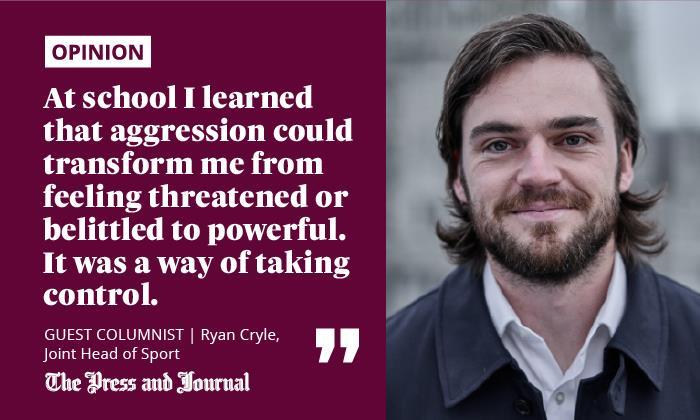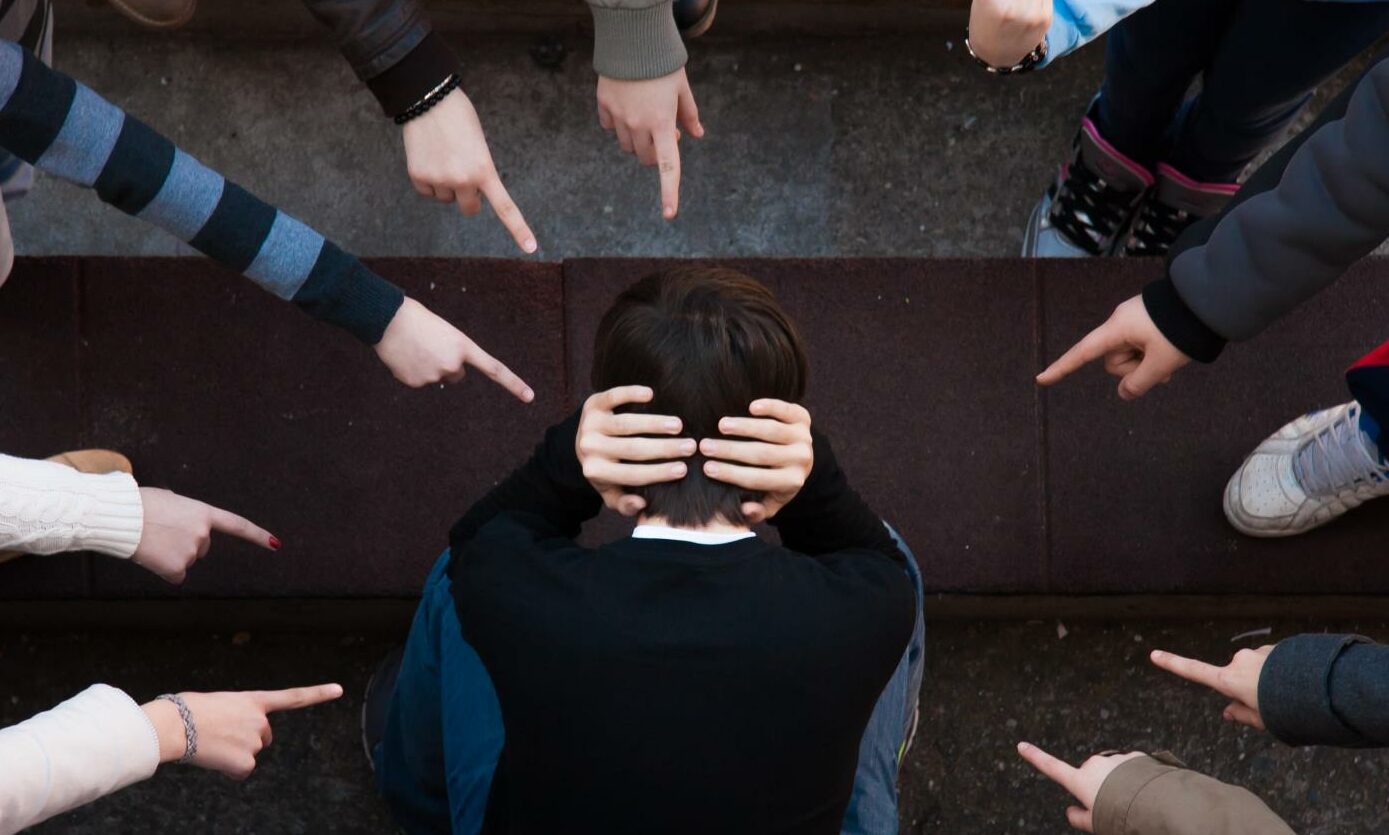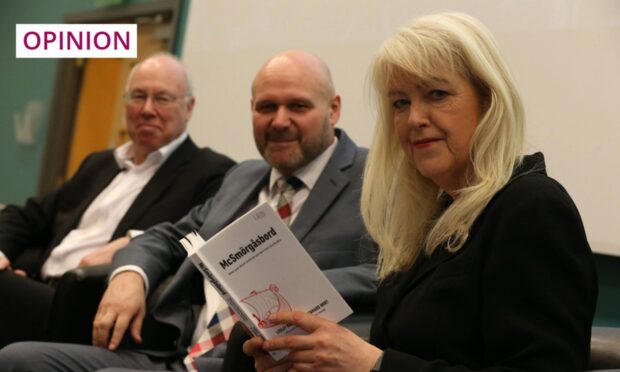We all have regrets from our teenage years. For me, it’s the things I did in anger.
From around 13, my temper was always lurking unseen, ready to boil over quickly. The burning, blossoming rage was usually uncontainable.

The foundations were laid in primary school, where I struggled to pronounce words with the letter R in them – something which was first pointed out by classmates taunting me. I was left furious and distraught every time someone made fun of me.
I had to figure out a way to make it stop. The most effective method, I discovered, was hitting one of the main culprits. I was probably 10 years old.
Aggression got me what I wanted but I couldn’t control it
My parents always encouraged me to stand up for myself. They meant by using words, I’m sure, but I raised my hands – punching someone in the face – and the taunts largely stopped.
Though I wasn’t aware of it at the time, the experience taught me that aggression could transform me from feeling threatened or belittled to powerful. It was a way of taking control. As a result, an aggressive response to any slight, no matter how mild, became the default reaction for me.
In the subsequent years, I was a reasonably friendly, sociable, boisterous teenager most of the time, but I could not handle any comment or action which was – or I imagined was – made with the intention of taking the piss out of me.
All hormonal teenagers fly off the handle at one stage or other, but this was a pattern and it was a problem.
Laughs I perceived as being at my expense were the trigger for a ballistic response – a friend’s head thrown into a brick wall for a playful push on the stairs, a headbutt to a classmate’s nose because he complained I had pushed past him, or punching a hole in someone else’s living room wall because I wasn’t getting enough attention from my girlfriend at a house party.
I once kicked someone in the back during a casual football game before storming home, remaining so poisonously angry that I hit my own face until I was bleeding.
It makes my skin crawl when I think back to these extreme overreactions. I’m sure the majority of people, including friends and even my parents, probably tiptoed around me as a result of my behaviour. Even now, at 29, are the classmates I’ve stayed in touch with still nervous, unsure how capable I am of being on the receiving end of a joke?
I thought I was a protector – really I was a problem
At school, I was convinced I was using violence to prove myself worthy of respect, and to protect myself. In response to the spectre of ever being bullied again, I repeatedly acted like a bully.
It reached the stage where I thought I was some kind of white knight, only raising my hands to protect others from aggressors. I twice headbutted someone I deemed guilty of bullying another pupil outside the school building. This incident proved crucial for me – it got me excluded.
I wish talk from the adults around me of anger management counselling had been followed through on
With hindsight, the short period I was barred, before having to return to the awkward glances of teachers and peers, must have been the shock I needed.
I wish talk from the adults around me of anger management counselling, made in passing more than anything, had been followed through on before I reached that point. Even after being excluded, I don’t remember ever being offered any.
I could have ruined my own life and ended someone else’s
It has only been a little more than a decade since my school days, but I would hope someone smacking a classmate’s head into a wall today would prompt more than just a teacher saying: “You shouldn’t have done that.” At the same time, I understand that teachers – then and now – aren’t trained or paid to offer behavioural rehabilitation.
Somehow – I don’t know how – I reached a point where I calmed down on my own, but there will be plenty of other angry, violent kids who have been left, without support, to turn into angry, violent adults.
We know what locals care about, because we are local. Like @RyanCryle, Head of Sport and @juliabryce92, Head of Food and Drink based at our office in Marischal Square. Because at The Press & Journal, every story starts with you.
Start your story today – https://t.co/tVct1HsmxT pic.twitter.com/3anmWOqSj9
— The Press & Journal (@pressjournal) November 18, 2021
I wouldn’t claim the rest of my school days were spent solely in the pursuit of academic excellence, but the losses of control, extreme anger and violence abated. However, I still think about them all the time, carrying my shame into adulthood.
Any of those awful acts I committed could have had nightmare consequences for everyone involved.
The slightest difference in force, angles or impact could have changed my victims’ lives forever, or even ended them.
I went on to study an English degree followed by a journalism postgrad and now have a fulfiling job, but if I had seriously injured or killed someone, my life could have taken a very different route.
I still don’t know what an acceptable level of anger is
It’s not just guilt and regret I struggle with in adult life. The way I behaved in those few particularly rage-filled teenage years have left me uncertain about what an acceptable level of anger is now.
I think most people I interact with on a daily basis would be surprised to learn who I was at school, but those who have played five-a-sides with me know I can still get excessively competitive and enjoy a physical battle. I probably have a higher than average red card count at Aberdeen’s various small-sided football facilities.
It is vital that young people are given help to understand themselves and the root of their anger a bit better
And though I don’t react like I used to, my temper can still flare up in lockstep with my own pain or clumsiness. I’ve learned to be wary and keep myself in check when I feel the string of anger start to tighten. Am I alone in that?
First and foremost, I hope young people today who start showing worrying patterns of angry, reckless behaviour are being spotted. But it is vital that they are also given help to understand themselves and the root of their anger a bit better – rather than society flipping a coin on the chances of them understanding and then changing their behaviour on their own.
Early intervention could save them from shame later in life, and possibly prevent their story from taking an irrecoverable turn for the worse.
Ryan Cryle is joint Head of Sport for The Press & Journal and Evening Express, and host of Northern Goal and Highland League Weekly











